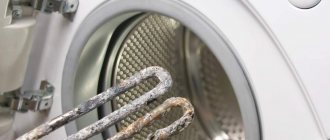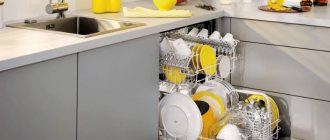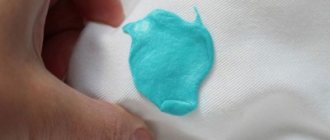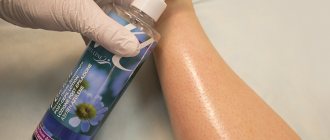Due to hard water, scale forms inside washing machines, and they quickly fail. A high concentration of salts in the liquid causes harm not only to household appliances, but also to people. Hair becomes thinner, skin ages faster, and kidney, vascular and heart diseases may occur. You can soften hard water at home using various means.
Chemical composition of hard water
An excess of calcium salts in water can harm not only health, but also household appliances.
A high concentration of alkaline earth metal salts makes water hard. It may contain carbonates, sulfates, magnesium and calcium chlorides, and mineral suspensions. The amount of impurities depends on the type of soil. Depending on the degree of hardness, there are three types of liquid:
- soft – up to 2°F;
- medium hardness – 2-10°F;
- hard – from 10°F.
The indicator evaluates the concentration of calcium and magnesium particles in water. If the value is above 7°F, the liquid acquires a bitter taste and should not be drunk.
Standard water hardness in an aquarium
German degrees are used to measure water hardness; 1 hD corresponds to 10 ml of calcium oxide in 1 liter of liquid. Below are the conditional levels of water hardness:
- very soft – 0-4;
- soft – 5-8 (not enough minerals);
- medium hardness – 9-16. The best option for corydoras catfish, small barbs, characins;
- hard – 17-32. The best option for cichlasomas, cichlids, ferns and sagitaria. The high mineral content is also very important for crustaceans, since their shells gradually break down in soft water. Finally, viviparous aquarium fish can live and reproduce comfortably in such water;
- very hard - over 33. Unsuitable environment for most aquatic inhabitants.
Conversion of water hardness units
There is no uniform standard. Plants and fish have different preferences. Although it is possible to identify critical values that should be excluded when arranging an aquarium. The minimum permissible hardness is 6, the maximum permissible is 33.
Note ! The best option would be to bring the hardness level as close as possible to the natural habitat of aquatic life.
Eg:
- neon fish do well in water with a hardness of 6;
- for viviparous women it is worth using water with level 10;
- snails need very hard water to maintain shell strength.
Snails in an aquarium
Types of hardness
Depending on the chemical composition of dissolved impurities, two types of hardness are distinguished:
- Temporary - created by the presence of calcium and magnesium bicarbonates. The problem is solved by boiling; when heated, the salts disintegrate.
- Constant or static - occurs from dissolved phosphates, chlorides, sulfates. It cannot be removed by boiling; you will need to soften the liquid with a special filter.
In more than 90% of cases, during chemical analysis in wells and wells, the liquid turns out to have temporary hardness.
Vinegar
Long-term use of hard water reduces soil acidity. This method can solve both problems, provided the correct proportions are observed.
In order not to harm the plants, just add 5 teaspoons of vinegar per 10 liters of water. Due to its chemical properties, acetic acid interacts with insoluble calcium or magnesium salts, causing them to precipitate.
Reasons for the appearance of impurities
Moisture is mineralized as it passes through the soil layers. If there are deposits of limestone, dolomite or gypsum in the region, the liquid receives many impurities. In shallow wells, their concentration changes several times a year. In spring during the flood and in autumn during the rainy season it decreases to a minimum level. In hot weather, when the liquid level in the well drops, the concentration of salts increases. In an artesian well the indicator is stable. Soft water is provided by wells on sand; the highest level of impurities is in sources on calcareous soil.
Removing hardness by heat treatment (boiling)
The easiest way to soften water at home is heat treatment, i.e. boiling. Exposure to high temperatures leads to the destruction of ionic bonds between chemical elements and the formation of sediment. Further, soft water can be used for drinking and household purposes.
Boiling water is carried out as follows:
- hard water is poured into a container and brought to a boil;
- After boiling, the water is cooled to room temperature and poured into a clean container.
A more complex option involves boiling water for an hour and letting it sit for 24 hours.
Boiling removes metal salts, carbon dioxide vapor, chloride compounds and mechanical impurities.
Despite its popularity and simplicity, heat treatment has some disadvantages:
- boiling leads to the rapid formation of limescale, which is difficult to remove;
- boiled water is not suitable for watering indoor plants;
- prolonged use of liquid after heat treatment can lead to deterioration of the gastrointestinal tract;
- water changes its organoleptic characteristics.
Harm from hard water
A clear example of the negative impact of hard water.
Salt impurities have a negative impact on human health, the condition of fabrics and household appliances. Their presence in a liquid can be determined by several signs:
- the appearance of scale on metal utensils and heating appliances;
- high consumption of detergents;
- rough fabric structure after washing;
- dry skin and hair, the appearance of irritation or dermatitis, dandruff, itching;
- unpleasant taste;
- pipeline overgrowth.
Plaque on the surface of the kettle, heating elements, pipes requires increased heating costs and can lead to breakdown. You have to regularly clean white deposits from faucets, showerheads, fixtures and tiles. Drinking liquids with salt impurities leads to problems with the kidneys and gastrointestinal tract.
Considering the scale of the negative consequences, installing filters for softening water from a well in a private home becomes a vital necessity. To determine the amount of impurities, home tests are carried out or a sample is sent to a laboratory.
How to determine water hardness
Hard water is characterized by the presence in its composition of a high content of potassium and magnesium salts. For accurate quantitative determination, a TDS conductivity meter is used. The measuring principle is based on the electrical conductivity of water. The higher its values, the greater the concentration of harmful inclusions.
At home, a simpler, visual method of determination is used. Over time, a visible light sediment appears on the walls of containers where drinking water is stored. A white calcified coating on the inner surface of the kettle will also be an indicator of hard water.
Softening methods
Softening liquid from an autonomous source or water supply is carried out in several ways:
Thermal methods (freezing and boiling)
The appearance of scale on the heating element of the kettle and its walls after boiling hard water.
To remove the hardness of water from wells, a thermal method is used. After boiling, the bicarbonates decompose. Sediment remains on the walls of the dish, but the liquid becomes softer. This is a simple method for home use. At the same time, it allows you to get rid of dangerous bacteria and microorganisms.
Freezing also helps reduce salt concentrations. Ice formation occurs gradually, the liquid that remains around it will have many impurities. It needs to be drained. After thawing you will get soft moisture. Both methods allow you to purify a limited amount of fluid consumed.
Chemical reagents
Technical water softening filter with polyphosphate
To soften water, chemical additives are used in the form of tablets, powders, and concentrates. They are placed in washing machines and dishwashers. When dissolved, the reagents soften the liquid. They are not added to drinking water. For these purposes, available means are used: soda, vinegar, citric acid. Baking soda is added during cooking at the rate of 1 tsp. for 3 liters of water. The acidified liquid is recommended for washing hair and removing scale. All chemicals are used in strict dosages.
Bad water: what is it?
Not all water can be softened. It’s worth figuring out whether this should be done at all.
1) What kind of water is called hard?
Surely you have found a kettle covered with scale on the inside, if not at home, then at someone else’s. If yes, then you are dealing with hard water.
Hard water is water with an excessive content of salts and heavy metals.
Is it possible to tell by eye whether your water is hard or soft? You can if you look at any metal that is constantly in contact with water. For example, the heating element of a washing machine or electric kettle.
This is what the heating device of a washing machine looks like after it has been in contact with hard water for a long time
If you have hard water, then electrical appliances that come into frequent contact with it will quickly fail.
Another method to determine water hardness is to foam soap in a bowl. The harder your water, the worse the soap will lather.
But it is best to act not by eye, but using a scientific approach.
2 ways to find excess salts in water:
- Express tests. You can buy them in pet stores or food stores. Easy to use and inexpensive.
- Conductivity meter. This is a special device that will not only help determine whether your water is hard, but will also show how much salt it contains than necessary.
If salt levels are above 300, such water is no longer worth drinking without purification.
3 antiviral drugs that can be used for hepatitis B
2) Why does the water need to be softened to bathe a child?
Bad water can become a real problem. It definitely cannot be consumed in an unrefined form, because you will get a whole range of medical problems.
A number of other problems caused by hard water:
- Damaged electrical appliances: kettle, dishwasher, washing machine.
- Clogged water pipes.
- White coating on dark things.
- Scale on the walls of pots and other utensils.
- Deterioration in the quality of fabrics during washing.
- Bad taste of water.
- Brittle nails, dry and dull hair.
Swimming in such water is still a pleasure. Shower gels and soaps do not foam well, therefore they form a coating on the skin that is practically not washed off. This plaque destroys the natural protection of the dermis, making the skin dry and flaky.
But for sensitive skin, such water is generally unsuitable for bathing. Babies do not yet have a protective film on the dermis, therefore hard water provokes a number of skin diseases. The most common is eczema.
Just compare two photos.
| BEFORE | AFTER |
| This baby was born absolutely healthy, but due to swimming in hard water he developed eczema. Red, inflamed spots cause discomfort to the baby. | Here, the picture is completely different: a healthy and happy baby does not suffer from eczema, because his mother softens his water before bathing. |
As you can see, softening hard water when bathing a child is simply necessary. This will help avoid a number of health problems for the baby.
Industrial filters
The most effective way to reduce the hardness of water from wells is to install filters. In a country house or cottage, where there is a minimum of household appliances, it is enough to buy a filter jug. A decrease in salt concentration occurs as it passes through the cartridge. Inside it is a filling of zeolite, ion exchange resin and activated carbon. The cartridge is replaced after 30-40 days. Popular manufacturers of pitcher filters: Aquaphor, Barrier, Geyser, Brita.
Ion exchange
Ion exchange unit
The units are columns or plastic containers with ion exchange resin. They allow you to remove calcium and magnesium ions from the liquid, replacing them with sodium ions. The equipment is installed on the pipeline in front of household appliances and prevents the appearance of scale. Ion exchange filters are also part of water treatment. After them, cartridges with activated carbon must be placed. Installations differ in productivity and resource size. The filter resin needs to be replaced. It is periodically regenerated in columns, and cartridges in small flasks are changed.
Reverse osmosis
Reverse osmosis filter
The best filter for softening hard water from a well and improving other parameters is a reverse osmosis system. It is designed for installation in water supply under pressure. The system consists of several filter elements that remove mechanical, organic, mineral impurities and hardness salts. The main purification is achieved after passing through a reverse osmosis membrane. A significant disadvantage of the installation is the high price. Among the manufacturers are the following companies: Atoll, Barrier, Geyser.
Magnetic filter
Magnetic water filter
The softener is a magnet embedded in the main line. Passing through the filter, metal salts precipitate due to the emergence of new crystallization centers. Compact equipment is installed on any section of the pipe. A thread is used for connection. The use of a magnet is relevant in hot and cold water supply systems, heating systems, and in front of pumps. Converters without chemical reagents eliminate the appearance of scale in the washing machine and dishwasher.
Electromagnet
One of the softening agents is an electromagnetic installation. The device is controlled by a microprocessor. Powered by electricity. The electromagnetic waves it emits destroy the metal salts in the stream and the deposited sediment. Loose impurities are washed out with water. The device is expensive, but it operates for several years without requiring maintenance costs.
Purifying water from an autonomous source makes the liquid tasty and healthy. The softener in the filtration system reduces the harmful effects of impurities on household appliances and heating devices. Removing metal salts has a beneficial effect on people's health and appearance and reduces the cost of detergents.
Magnetic water softener
Magnetic balls are used to soften water for washing machines. This is a kind of filter that neutralizes molecules of salts and metals, thereby softening the water. Using this method of water softening will preserve the household appliance, reduce the amount of limescale deposits on the internal parts of the unit, and increase its service life.
This is an effective means for softening water; the principle of its operation is to change the composition of the liquid due to the influence of magnetic fields. In addition, this softener eliminates harmful impurities contained in water.
The filter is a cylinder equipped with permanent magnets, due to which salts and metals lose the ability to “stick” to the heating elements of various devices, and existing deposits are loosened and easily cleaned off.
For water cleaning to be effective, the pressure should not be stronger than 4 m/s. Most often, magnetic softeners are installed in boiler rooms.
Related article: Crochet sweater with extended back with diagrams and video











